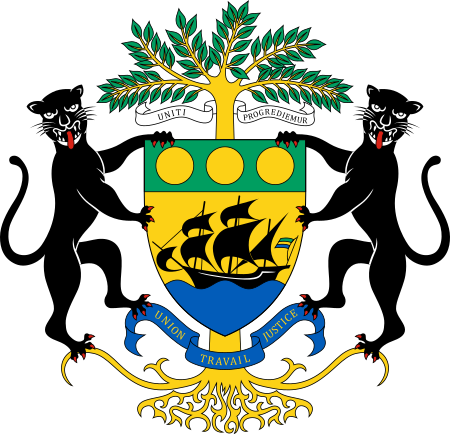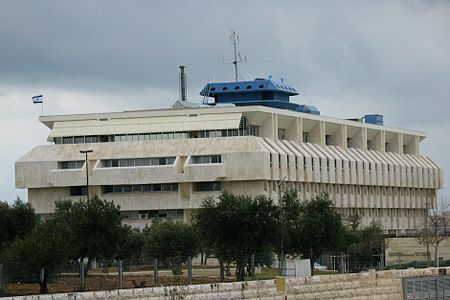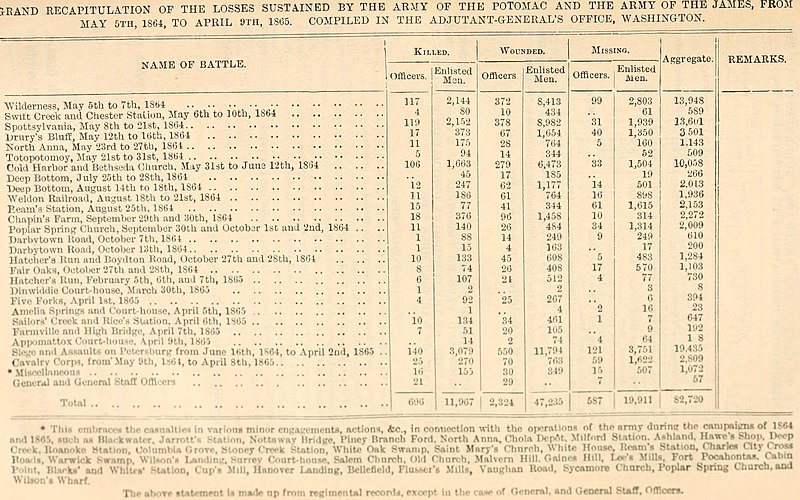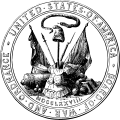Army of the Potomac
| |||||||||||||||||||||||||||
Read other articles:

Village in Estonia Village in P├Ąlva County, EstoniaPikaj├żrveVillageLake Pikaj├żrv on village territoryCountry EstoniaCountyP├Ąlva CountyParishKanepi ParishTime zoneUTC+2 (EET) ŌĆó Summer (DST)UTC+3 (EEST) Pikaj├żrve is a village in Kanepi Parish, P├Ąlva County in southeastern Estonia.[1] Pikaj├żrve Manor References ^ Classification of Estonian administrative units and settlements 2014 (retrieved 28 July 2021) vteSettlements in Kanepi ParishSmall boroughs Kanepi Villages …

Celebrity duck in New York City's Central Park The mandarin duck in Central Park in November 2018 The Central Park mandarin duck, also known as Mandarin Patinkin or the Hot Duck, is a male mandarin duck seen at the Pond in New York City's Central Park starting in late 2018. His colorful appearance, which contrasted with native waterfowl, combined with his presence far outside of the species' native range of East Asia, led to media attention from late 2018 through 2019. Though he has a band aroun…

Butler LampsonBiographieNaissance 23 d├®cembre 1943 (80 ans)WashingtonNom dans la langue maternelle Butler W. LampsonNationalit├® am├®ricaineFormation Universit├® HarvardUniversit├® de Californie ├Ā BerkeleyActivit├®s Informaticien, ing├®nieur, professeur d'universit├®Autres informationsA travaill├® pour Palo Alto Research CenterDigital Equipment CorporationMassachusetts Institute of TechnologyMicrosoftMembre de Acad├®mie nationale d'ing├®nierie des ├ētats-Unis (1984)Acad├®mie am├®ricaine d…

Conrad in Quest of His YouthTitolo originaleConrad in Quest of His Youth Lingua originaleinglese Paese di produzioneStati Uniti d'America Anno1920 Durata60 min Dati tecniciB/Nrapporto: 1,33:1film muto Generecommedia, drammatico RegiaWilliam C. de Mille SoggettoLeonard Merrick (romanzo) SceneggiaturaOlga Printzlau ProduttoreWilliam C. de Mille Casa di produzioneParamount Pictures FotografiaL. Guy Wilky MusicheHugo Riesenfeld ScenografiaWilfred Buckland Mitchell Leisen (decorazioni) Interpreti…

µŁżµóØńø«ÕÅ»ÕÅéńģ¦Ķŗ▒Ķ¬×ńČŁÕ¤║ńÖŠń¦æńøĖµćēµóØńø«µØźµē®ÕģģŃĆé (2021Õ╣┤5µ£ł6µŚź)Ķŗźµé©ń夵éēµØźµ║ÉĶ»ŁĶ©ĆÕÆīõĖ╗ķóś’╝īĶ»ĘÕŹÅÕŖ®ÕÅéĶĆāÕż¢Ķ»Łń╗┤Õ¤║ńÖŠń¦æµē®ÕģģµØĪńø«ŃĆéĶ»ĘÕŗ┐ńø┤µÄźµÅÉõ║żµ£║µó░ń┐╗Ķ»æ’╝īõ╣¤õĖŹĶ”üń┐╗Ķ»æõĖŹÕÅ»ķØĀŃĆüõĮÄÕōüĶ┤©ÕåģÕ«╣ŃĆéõŠØńēłµØāÕŹÅĶ««’╝īĶ»æµ¢ćķ£ĆÕ£©ń╝¢ĶŠæµæśĶ”üµ│©µśÄµØźµ║É’╝īµł¢õ║ÄĶ«©Ķ«║ķĪĄķĪČķā©µĀćĶ«░{{Translated page}}µĀćńŁŠŃĆé ń║”ń┐░µ¢»ķĪ┐ńÄ»ńżüKalama Atoll ńŠÄÕ£ŗµ£¼Õ£¤Õż¢Õ░ÅÕ│ČÕČ╝ Johnston Atoll µŚŚÕ╣¤ķó鵣ī’╝ÜŃĆŖµś¤µóصŚŚŃĆŗThe Star-Spangled Bannerń┤äń┐░µ¢»ķĀōńÆ░ńżüÕ£░Õ…

Cet article est une ├®bauche concernant le Gabon. Vous pouvez partager vos connaissances en lŌĆÖam├®liorant (comment ?) selon les recommandations des projets correspondants. D├®partements du Gabon Ce tableau recense les d├®partements du Gabon[1] avec leur chef-lieu et leur population. Deux d├®partements ont ├®t├® cr├®├®s en avril 2006 ; il s'agit de Cap Est├®rias et du Komo Oc├®an, cr├®├®s ├Ā partir d'un partionnement du Komo-Mondah[2]. Le 21 f├®vrier 2013, le d├®partement de Cap Est├®…
Õæ©ĶÖĢķÖżõĖēÕ«│The Pig, The Snake and The PigeonµŁŻÕ╝ÅńēłµĄĘÕĀ▒Õ¤║µ£¼ĶĄäµ¢ÖÕ»╝µ╝öķ╗āń▓Šńö½ńøæÕłČµØÄńāłķ╗āµ▒¤Ķ▒ÉÕŗĢõĮ£µīćÕ░ĵ┤¬µś░ķĪźń╝¢Õē¦ķ╗āń▓Šńö½õĖ╗µ╝öķś«ńČōÕż®ĶóüÕ»īĶÅ»ķÖ│õ╗źµ¢ćńÄŗµĘ©µØĵØÄõ╗üĶ¼ØńōŖńģ¢ķģŹõ╣Éńø¦ÕŠŗķŖśµ×ŚÕŁØĶ”¬µ×ŚµĆØÕ”żõ┐ØÕŹ£µæäÕĮ▒ńÄŗķćæÕ¤ÄÕē¬ĶŠæķ╗āń▓Šńö½µ×ŚķøŹńøŖÕłČńēćÕĢåõĖĆń©«µģŗÕ║”ķø╗ÕĮ▒ĶéĪõ╗Įµ£ēķÖÉÕģ¼ÕÅĖńēćķĢ┐134ÕłåķÉśõ║¦Õ£░ Ķć║ńüŻĶ»ŁĶ©ĆÕ£ŗĶ¬×ń▓ĄĶ¬×ÕÅ░Ķ¬×õĖŖµśĀÕÅŖÕÅæĶĪīõĖŖµśĀµŚźµ£¤ 2023Õ╣┤10µ£ł6µŚź (2023-10-06)’╝łÕÅ░ńüŻ’╝ē 2023Õ╣┤11µ£ł2µŚź (2023-11-02)’╝łķ”ÖµĖ»ŃĆü…

Social movement Women in Mexico 68 redirects here. For the sporting event that happened later that year, see 1968 Summer Olympics. Mexican Movement of 1968Part of Protests of 1968 and Mexican Dirty WarArmored cars at the Z├│calo in Mexico City in 1968Date26 July 1968 ŌĆō 2 October 1968LocationMexico City, MexicoCaused by 1968 Summer Olympics Dominant-party system Political repression Authoritarianism GoalsDemocratic changes, civil liberties, freedom for political prisonersMethodsStudent strike, …

Daniel SnoeksLahir12 Juli 1994 (umur 29)Darwin, Wilayah Utara, AustraliaPekerjaanModel, tokoh televisi, seniman tatoSitus webDaniel Snoeks di Instagram Daniel Jacobus Snoeks (lahir 12 Juli 1994) adalah seorang Australia yang tinggal dan tampil di Korea Selatan sebagai model, tokoh televisi, dan seniman tato. Ia menjadi anggota dalam acara bincang-bincang Non-Summit.[1] Pada bulan Oktober 2014, Snoeks menjadi pembawa acara Saturday Night Live Korea.[2] Referensi ^ Hwang, Ji-y…

2000 film directed by Khalid Mohammed FizaPosterDirected byKhalid MohammedWritten byKhalid MohammedJaved SiddiquiProduced byPradeep GuhaStarringKarisma KapoorJaya BachchanHrithik RoshanNarrated byKarisma KapoorCinematographySantosh SivanEdited byA. Sreekar PrasadMusic bySongs:Anu MalikGuest Composers:A. R. RahmanRanjit BarotScore:Ranjit BarotProductioncompaniesThe Culture CompanyUTV Motion PicturesRelease date 8 September 2000 (2000-09-08) Running time171 minutesCountryIndiaLangua…

Ugra Srinivasa is one of the idols in the Tirumala Venkateswara Temple at Tirumala, Andhra Pradesh. Ugra means anger and the idol which was originally called Venkatatturaivar is supposed to represent the anger aspect of Lord Venkateswara. He is also known as Snapana Murti. Legend Legend has it that fire broke out in the village destroying houses during Brahmotsavam at Tirumala in the 14th century A.D. When prayers were offered to the God, a vision appeared to a devotee with a message from Lord S…

┘Ŗ┘üž¬┘éž▒ ┘ģžŁž¬┘ł┘ē ┘ćž░┘ć ž¦┘ä┘ģ┘鞦┘äž® žź┘ä┘ē ž¦┘䞦ž│ž¬ž┤┘枦ž» ž©┘ģžĄž¦ž»ž▒. ┘üžČ┘䞦┘ŗžī ž│ž¦┘ć┘ģ ┘ü┘Ŗ ž¬žĘ┘ł┘Ŗž▒ ┘ćž░┘ć ž¦┘ä┘ģ┘鞦┘äž® ┘ģ┘å ž«┘䞦┘ä žźžČž¦┘üž® ┘ģžĄž¦ž»ž▒ ┘ģ┘łž½┘ł┘é ž©┘枦. žŻ┘Ŗ ┘ģž╣┘ä┘ł┘ģž¦ž¬ ž║┘Ŗž▒ ┘ģ┘łž½┘éž® ┘Ŗ┘ģ┘ā┘å ž¦┘䞬ž┤┘ā┘Ŗ┘ā ž©┘枦 ┘łžźž▓ž¦┘䞬┘枦. (┘ģž¦ž▒ž│ 2016) ┘ćž░┘ć ┘鞦ž”┘ģž® ž©ž¦┘äž¼ž¦┘ģž╣ž¦ž¬ ┘łž¦┘ä┘ā┘ä┘Ŗž¦ž¬ ž¦┘ä┘ģž¬┘łž¦ž¼ž»ž® ž©ž»┘ł┘äž® ž¦┘ä┘ā┘ł┘Ŗž¬žī ž½┘ģ ž¬┘ä┘Ŗ┘枦 ┘鞦ž”┘ģž® ž©ž¦┘ä┘ģž╣ž¦┘ćž» ž¦┘䞬žĘž©┘Ŗ┘é┘Ŗž® ┘łž¦┘äž╣ž│┘āž▒┘Ŗž®. ┘鞦ž”┘ģž® ž¦┘äž…

Marathi cinema All-time 1910s 1910-1919 1920s 1920 1921 1922 1923 19241925 1926 1927 1928 1929 1930s 1930 1931 1932 1933 19341935 1936 1937 1938 1939 1940s 1940 1941 1942 1943 19441945 1946 1947 1948 1949 1950s 1950 1951 1952 1953 19541955 1956 1957 1958 1959 1960s 1960 1961 1962 1963 19641965 1966 1967 1968 1969 1970s 1970 1971 1972 1973 19741975 1976 1977 1978 1979 1980s 1980 1981 1982 1983 19841985 1986 1987 1988 1989 1990s 1990 1991 1992 1993 19941995 1996 1997 1998 1999 2000s 2000 2001 2002…

Specialized metal tool used in working with tires Not to be confused with lug wrench. Typical set of three metal tire levers of the type used on bicycles A tire iron (also tire lever or tire spoon) is a specialized metal tool used in working with tires. Tire irons have not been in common use for automobile tires since the shift to the use of tubeless tires in the late 1950s. Bicycle tire irons are still in use for those tires which have a separate inner tube, and can have a hooked C-shape cut in…

Central bank of Israel Bank of IsraelūæūĀū¦ ūÖū®ū©ūÉū£ (Hebrew) ž©┘å┘ā žźž│ž▒ž¦ž”┘Ŗ┘ä (Arabic)HeadquartersKiryat HaMemshala, Jerusalem, IsraelEstablished24 August 1954 (1954-08-24)OwnershipGovernment of Israel (Ministry of Finance)[1]GovernorAmir Yaron (2018-present)Central bank of IsraelCurrencyIsraeli new shekelILS (ISO 4217)ReservesUS$206 billion(about Ōé¬664 billion) (March 2022)[2]Bank rate4.5% (April 2023)[3]Preceded byBank …

┘Ŗ┘ł┘ģ┘Ŗ┘å ┘ü┘Ŗ ┘å┘Ŗ┘ł┘Ŗ┘łž▒┘ā2 Days in New York (ž©ž¦┘äžź┘åž¼┘ä┘Ŗž▓┘Ŗž®) ┘ģž╣┘ä┘ł┘ģž¦ž¬ ž╣ž¦┘ģž®ž¦┘䞥┘å┘ü ž¦┘ä┘ü┘å┘Ŗ ┘ā┘ł┘ģ┘Ŗž»┘Ŗžī ž»ž▒ž¦┘ģž¦žī ž▒┘ł┘ģž¦┘åž│┘Ŗž¬ž¦ž▒┘Ŗž« ž¦┘䞥ž»┘łž▒ 2012┘ģž»ž® ž¦┘äž╣ž▒žČ 96 ž»┘é┘Ŗ┘éž®ž¦┘ä┘äž║ž® ž¦┘䞯žĄ┘ä┘Ŗž® ž¦┘äžź┘åž¼┘ä┘Ŗž▓┘Ŗž® ┘łž¦┘ä┘üž▒┘åž│┘Ŗž®ž¦┘äž©┘äž» ž©┘äž¼┘Ŗ┘āž¦ ┘ł┘üž▒┘åž│ž¦┘ģ┘ł┘éž╣ ž¦┘ä┘ł┘Ŗž© magpictures.comŌĆ” ž¦┘äžĘž¦┘é┘ģž¦┘ä┘ģž«ž▒ž¼ ž¼┘ł┘ä┘Ŗ ž»┘äž©┘Ŗž¦┘äž│┘Ŗ┘垦ž▒┘Ŗ┘ł ž¼┘ł┘ä┘Ŗ ž»┘äž©┘Ŗ[1] ŌĆö žŻ┘ä┘āž│┘Ŗž¦ ┘䞦┘åž»┘Ŗž¦[1] ž¦┘äž©žĘ┘…

Artikel ini sebatang kara, artinya tidak ada artikel lain yang memiliki pranala balik ke halaman ini.Bantulah menambah pranala ke artikel ini dari artikel yang berhubungan atau coba peralatan pencari pranala.Tag ini diberikan pada Oktober 2022. Queso fresco (keju segar), sebuah keju hijau, dengan penampilan putih bundar Keju hijau adalah sebuah keju segar yang tak dikeringkan maupun disimpan, yang berwarna putih dan biasanya berbentuk bundar. Oxford English Dictionary memberikan sebuah rujukan d…

µóģµŗēĶÆé┬ĘĶŠŠõ╝Ŗńō”┬ĘÕźźÕģŗÕĪöń╗┤õ║ÜÕ░╝Melati Daeva OktaviantiÕ¤║µ£¼Ķ│ćµ¢Öõ╗ŻĶĪ©Õ£ŗÕ«Č/Õ£░ÕŹĆ ÕŹ░Õ║”Õ░╝Ķź┐õ║×Õć║ńö¤ (1994-10-28) 1994Õ╣┤10µ£ł28µŚź’╝ł29µŁ▓’╝ē[1] ÕŹ░Õ║”Õ░╝Ķź┐õ║×õĖćõĖ╣ń£üĶź┐ÕåĘ[1]Ķ║½ķ½ś1.68ń▒│’╝ł5Ķŗ▒Õ░║6Ķŗ▒Õ»Ė’╝ē[1]µÅĪµŗŹÕÅ│µēŗ[1]õĖ╗ķĀģ’╝ÜÕź│ÕŁÉķøÖµēōŃĆüµĘĘÕÉłķøÖµēōĶüʵźŁµł░ńĖŠ48ÕŗØŌĆō27Ķ▓Ā’╝łÕź│ķøÖ’╝ē109ÕŗØŌĆō56Ķ▓Ā’╝łµĘĘķøÖ’╝ēµ£Ćķ½śõĖ¢ńĢīµÄÆÕÉŹń¼¼4õĮŹ’╝łµĘĘķøÖ-µÖ«µŗēµ¢ć┬ĘÕ¢¼õĖ╣’╝ē’╝ł2020Õ╣┤3µ£ł17µŚź[2]’╝ēńÅŠµÖéõĖ¢ńĢīµÄÆÕÉŹń¼¼6õĮŹ…

Island in South Carolina, United States Not to be confused with Saint Helena. Saint HelenaNickname: FrogmoreA Fourth of July celebration. St. Helena Island, South Carolina, 1939Saint HelenaShow map of South CarolinaSaint HelenaShow map of North AtlanticGeographyLocationBeaufort County, South Carolina, United StatesCoordinates32┬░22ŌĆ▓35ŌĆ│N 80┬░34ŌĆ▓20ŌĆ│W / 32.376272┬░N 80.572228┬░W / 32.376272; -80.572228ArchipelagoSea IslandsArea63.789 sq mi (165.21 km2)…

Questa voce sull'argomento Nazionali di calcio ├© solo un abbozzo. Contribuisci a migliorarla secondo le convenzioni di Wikipedia. Voce principale: Nazionale di calcio dell'Italia. Italia Under-18 Uniformi di gara Casa Trasferta Sport Calcio FederazioneFIGCFederazione Italiana Giuoco Calcio ConfederazioneUEFA SoprannomeAzzurrini Selezionatore Daniele Franceschini Campionato d'Europa Under-18 Partecipazioni30 (esordio: 1948) Miglior risultato Campioni nel 1955, 1956, 1958, 1966 La Nazionale …







